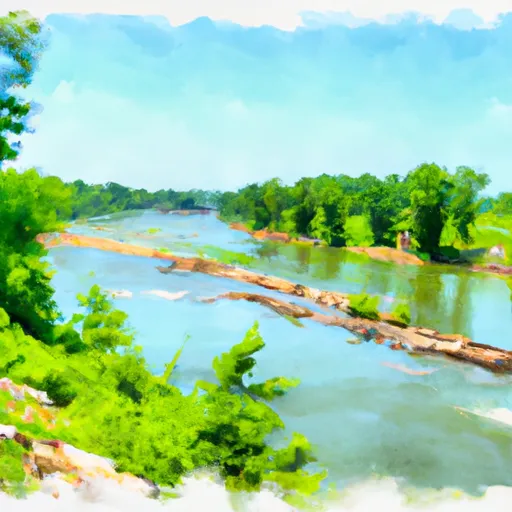Summary
Total streamflow across the
Illinois River
was last observed at
52,940
cfs, and is expected to yield approximately
105,005
acre-ft of water today; about 71%
of normal.
Average streamflow for this time of year is
74,952 cfs,
with recent peaks last observed
on
2015-12-28 when daily discharge volume was observed at
632,800 cfs.
Maximum discharge along the river is currently at the
Illinois River At Henry
reporting a streamflow rate of 15,700 cfs.
This is also the highest stage along the Illinois River, with a gauge stage of
15.56 ft at this location.
This river is monitored from 12 different streamgauging stations along the Illinois River, the highest being situated at an altitude of 1,202 ft, the
Illinois River Near Kerby.
River Details
| Last Updated | 2026-01-01 |
| Discharge Volume | 105,005 ACRE-FT |
| Streamflow |
52,940.0 cfs
+2870.0 cfs (+5.73%) |
| Percent of Normal | 70.63% |
| Maximum |
632,800.0 cfs
2015-12-28 |
| Seasonal Avg | 74,952 cfs |
River Streamflow Levels
| Streamgauge | Streamflow | Gauge Stage | 24hr Change (%) | % Normal | Minimum (cfs) | Maximum (cfs) | Air Temp | Elevation |
|---|---|---|---|---|---|---|---|---|
|
Illinois River Near Kerby
USGS 14377100 |
1130 cfs | 5.27 ft | -9.6 | |||||
|
Illinois River At Savoy
USGS 07194800 |
39 cfs | 2.16 ft | 5.07 | |||||
|
Illinois River At Hwy. 16 Near Siloam Springs Ar
USGS 07195400 |
224 cfs | 6.06 ft | -0.88 | |||||
|
Illinois River South Of Siloam Springs
USGS 07195430 |
209 cfs | 2.61 ft | 0 | |||||
|
Illinois River Near Watts
USGS 07195500 |
269 cfs | 2.46 ft | 1.13 | |||||
|
Illinois River At Chewey
USGS 07196090 |
305 cfs | 2.82 ft | 3.74 | |||||
|
Illinois River Near Tahlequah
USGS 07196500 |
353 cfs | 5.08 ft | 0 | |||||
|
Illinois River Near Gore
USGS 07198000 |
96 cfs | 6.68 ft | -11.57 | |||||
|
Illinois River At Marseilles
USGS 05543500 |
9610 cfs | 12.7 ft | -12.64 | |||||
|
Illinois River At Kingston Mines
USGS 05568500 |
15000 cfs | 6.14 ft | 13.64 | |||||
|
Illinois River At Henry
USGS 05558300 |
15700 cfs | 15.56 ft | 0 | |||||
|
Illinois River At Valley City
USGS 05586100 |
11500 cfs | 3.69 ft | 28.92 |
Seasonal Discharge Comparison
Maximum Streamflow Discharge
Streamflow Elevation Profile
The Illinois River (Miami-Illinois: Inoka Siipiiwi) is a principal tributary of the Mississippi River, approximately 273 miles (439 km) long, in the U.S. state of Illinois. The river drains a large section of central Illinois, with a drainage basin of 28,756.6 square miles (74,479 km2). The drainage basin extends into Wisconsin, Indiana, and a very small area of southwestern Michigan. This river was important among Native Americans and early French traders as the principal water route connecting the Great Lakes with the Mississippi. The French colonial settlements along the rivers formed the heart of the area known as the Illinois Country. After the construction of the Illinois and Michigan Canal and the Hennepin Canal in the 19th century, the role of the river as link between Lake Michigan and the Mississippi was extended into the era of modern industrial shipping. It now forms the basis for the Illinois Waterway.

 The State Line To The Mouth Of The River
Outh Of The River
The State Line To The Mouth Of The River
Outh Of The River